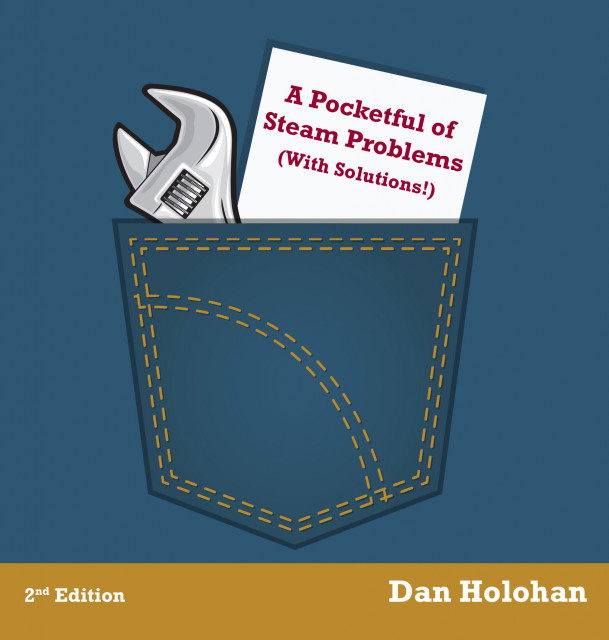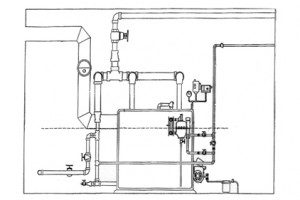We always have turkey for Thanksgiving. I mean who doesn’t? My job wasn’t to cook it, though; it was to eat it.
Spitting or Hissing Air Vents

Here are some reasons why the air vents are hissing or spitting water on your one-pipe steam heating system (and where to look for solutions).
The system is dirty.
Steam heating systems are constantly corroding. The insides of the pipes get wet on each cycle, and then dry out as air rushes back in to fill the void left by the condensing steam. Over time, the pipes rust. Feed water brings in fresh oxygen, which causes corrosion. It also brings in minerals, which build up in the boiler. If no one cleans the system, the rust and mineral deposits, driven by the steam, eventually wind up in the air vents. When a vent can't seat tightly, it will spit water and hiss.
Other vents are not working as they should.
A hissing air vent is trying to tell you something, so listen! The air is rushing to escape because it doesn't have enough ways out of the system. As air vents fail, the velocity of the air leaving the working air vents increases. That's what makes the hissing sound. As the velocity increases, the particles of rust and minerals move more quickly toward the working air vents. Soon, those vents fail as well. If you can hear the vents venting, you don't have enough vents.
Take a good look at the system and clean or replace the clogged air vents.
There are no main vents on the system.
The key to balancing a one-pipe steam system is to vent the air from the mains quickly, and the air from the radiators in proportion to the size of each radiator. If the system has no main vents, the radiator vents have to do two jobs. They'll have to vent the air from both the radiators and the mains. That double duty increases the velocity of the air as it leaves the radiator vents, making them hiss. Inspired by the higher-velocity air, more debris works its way toward the vents, causing them to clog and spit water.
Every one-pipe steam system needs a main vent near the end of each main, but not right at the end in a tee. If the main vent is at the end of the main, water hammer might damage it. Place the vent at least 15 inches back from the end of the main, and up on a six-inch nipple. This gets it out of the way of any water hammer damage. If you vent the mains properly, the steam will travel more evenly through the piping system, and leave more slowly through each vent. That increases the life of the vents, and lessens the spitting and hissing problem.
The vents are the wrong size for their location.
There's a lot of air in a steam main so you should use a large vent that can handle a lot of air. If the vent is too small, it will hiss and eventually spit water as it fills with sludge. The same is true for large radiators. They contain a lot of air so you should vent them quickly.
With a large radiator, however, you're better off using two slower air vents instead of one quick one. Drill and tap the radiator for the second vent a few inches below the first vent. The two vents will work together when the steam first reaches the radiator. Then, when the steam reaches the first vent (the higher of the two) the second will continue to vent at a slower rate. Since there will be less air in the radiator at that point, the second vent will be properly sized. This is a Dead Men's trick that works wonders!
The boiler is oversized or overfired.
As you increase the amount of steam moving through a pipe you also increase the steam's velocity. The faster the steam moves, the more likely it will be to drive debris toward the air vents.
Size and fire a boiler to the connected load. No more, and no less.
The system has motorized zone valves.
When a motorized valve shuts, the firing rate of the boiler stays the same. As the boiler tries to move its entire load through the zones left open, the velocity of the steam increases. The faster the steam moves, the more likely it will be to drive debris toward the air vents.
Increase the size of the air vents, or use several main vents on a manifold near the end of each main.
Want to learn more about your steam-heating system? Read A Pocketful of Steam Problems (with Solutions)!
Leave a comment
Related Posts
I had written a story for Plumbing & Mechanical a while back about a fella in Canada who sent me this email: "Our problem is that five out of hundreds of univentilator co...

I love all the advances taking place in the world of hydronics, but I’m still seeing plenty of steam systems out there in our older cities, so knowing about dry steam wil...